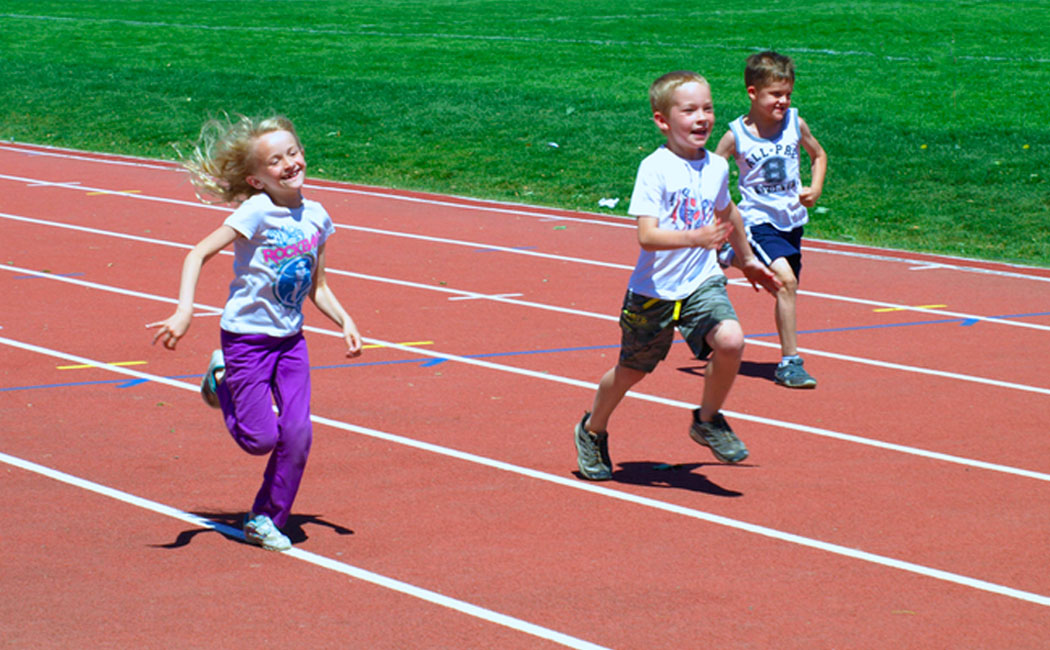
For years, research has shown that active children — including those who participate in youth sports — tend to be healthier than those who are less active.
Ann Rogers, assistant professor in the Department of Health Promotion in the College of Public Health at the University of Nebraska Medical Center, is leading a project to understand what influences youth sports participation, including where children and adolescents live.
A research team made up of Rogers, Michaela Schenkelberg, associate professor in the School of Health and Kinesiology at the University of Nebraska at Omaha; and Mary Von Seggern, research associate in the College of Public Health at UNMC, is collaborating with Amanda Prokasky, MAP Academy senior research specialist, to explore how individual, socio-economic and geographic factors relate to participation in youth sports.
Participation is often affected by race, ethnicity and income level, with lower participation among children from lower-income households.
Using funding from the MAP Academy’s Applied Analytics and Data Infrastructure (AADI) Catalyst Program, Rogers and her team began working with Prokasky in February to analyze data gathered from 2021-22 in the National Survey of Children’s Health — a publicly available dataset from the Health Resources and Services Administration. The survey includes responses from more than 60,000 youth across all 50 states.
One of the reasons I was so interested in this MAP Academy funding opportunity was to build a relationship with MAP Academy researchers, and to have somebody who can provide that data analysis and statistical support in future projects.”
— Ann Rogers, assistant professor, UNMC
The team is examining individual- and state-level predictors of sport participation among youth aged 6 to 17 and their association with meeting physical activity guidelines.
“Dr. Prokasky has really helped us refine our approach,” Rogers said. “She has helped us better understand the dataset, as well as some of the limitations of the data and the variables involved. Her help has been invaluable.”
Preliminary results are underway, with publication targeted for next fall.
“We will be able to get the work done so quickly because of the MAP Academy’s help,” Rogers said. “It’s a very special skill set MAP Academy personnel bring to the table.”
Prokasky said the project’s findings will help inform local and state decision-makers about the key facilitators and barriers youth face in meeting physical activity guidelines.
“Collaborating on this project has brought together diverse expertise to explore how youth sports participation shapes physical activity patterns across states,” she said. “Ann and her team bring deep subject-matter knowledge, and I was excited to contribute my methodological expertise in analyzing national survey data.”
Now in its second year, the AADI Catalyst Program connects faculty with MAP Academy researchers, drawing upon their expertise in rigorous analysis and database support. The program also helps lay the groundwork for future research collaboration.
The program is funded by the Nebraska Research Initiative and supports collaboration among the MAP Academy team and interdisciplinary faculty across the University of Nebraska system who conduct field-based human subjects research.
“One of the reasons I was so interested in this MAP Academy funding opportunity was to build a relationship with MAP Academy researchers, and to have somebody who can provide that data analysis and statistical support in future projects,” Rogers said. “This is just a starting point. We hope to use it as preliminary data to seek other funding opportunities in collaboration with the MAP Academy.”